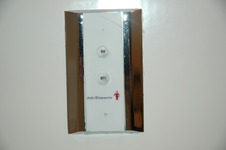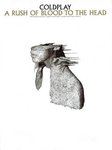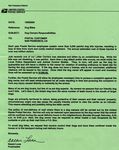 |
| Angelika/Mike Schilli |
|
Unless you're just eating dinner right now, please take a look at the swollen foot in Figure 1. I really couldn't walk anymore, every step hurt like someone was drilling into my ankle with a knife.
Where I work, at home or at the office, doesn't matter much, so the next morning I just called the office and requested a week of working from home. We have a super-elegant armchair at home, with a footrest that pops out when you lean back, and equipped with a laptop and a wireless network, it was really a pleasure to work like that. But after a few days, when my foot didn't get better, I started to get anxious. Maybe I should get an X-ray done?
The problem is, of course, that hospitals in the US are a nightmare. I believe the doctors there wouldn't find a fracture, even if it was marked with a thick red felt-tip pen on the X-ray. Sure, you can get a quadruple bypass or maybe have your brain taken out and put back in without any problem from super specialists, but everyday care is like in the third world.
My aversion to going to the doctor in America is already legendary: Last year, while Angelika was traveling, I pulled a roughly 1 cm long wood fiber into my finger with an careless hand movement while installing a computer cable under my desk, directly below the nail. The fiber couldn't be grasped with tweezers, it had slipped too deep under the skin. It was Saturday and I would have had to drive to the emergency room of the hospital, which was right around the corner, but in a rather, uhm, vibrant part of town. I had been there once before on a different occasion, and during my approximately one hour stay, a person with gun shot wounds had been wheeled in, blood-soaked. I'm no wimp, but I'm not going to the emergency room again anytime soon.
Finally, I drank a large glass of whiskey, heated up a needle, sprayed disinfectant on it, and slit the skin below the fingernail. It took about half an hour until, after several attempts, I finally managed to grab the splinter with tweezers. My victory yell could be heard all the way to the hospital.
Furthermore, after any visit to a doctor or hospital, one often has to struggle with the health insurance for months. Because hospitals have to treat people without insurance or means at least inadequately, and often remain stuck with the costs, they ruthlessly exploit people with insurance. When the insurance companies then refuses to pay those exorbitant amounts charged, the patient has to argue with rude and merciless debt collectors employted by the hospitals.
Besides, our health insurance requires an annual deductible of $250 (as Angelika already explained in Rundbrief 11/2004). With my new job since the end of September, I didn't have the new health insurance for long and was faced with the question: Should I pay $250 to get an X-ray of my ankle? But in the end, I broke down and ended up going to the doctor. He sent me to the hospital for an X-ray, where nothing was found. Well, at least I was reassured, that was worth the money.
When seeing a doctor, we only pay a deductible of $15, and our health insurance covers everything else. Not so with hospital services like X-rays: the health insurance only pays 90% and, as I said, I as a patient have to chip in $250 annually.
Figure 2 shows the bill that came by mail after my visit. The hospital actually charged $526 for the X-rays. Probably the X-ray machine was made of gold. In column B you can see that the insurance had previously negotiated a maximum of $341.90 with the hospital for X-rays of the ankle, and that is the amount that the hospital gets. If I wasn't insured, the hospital would have coldly charged me $526. In column E you can see the co-payment of $250 that your humble narrator unfortunately had to pay out of pocket. Of the $341.90, therefore, $91.90 remain, of which the health insurance reimburses 90%, and I was left with another $9.19. So we sent a check for $259.19 to the hospital and the matter was settled. Aetna, our healthcare insurance, is one of the better insurances and there were no complications. Well, that was one expensive Formula 1 curve!













